 Be Inspired Blog - Arizona
Be Inspired Blog - Arizona
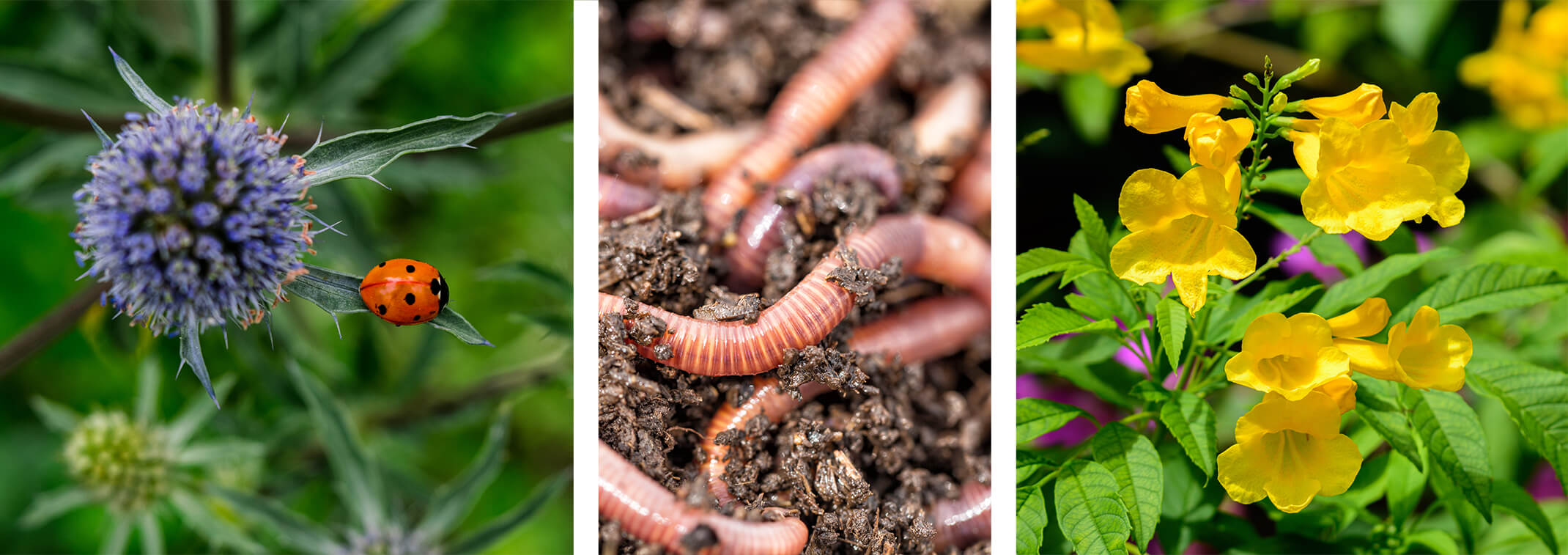
How to Protect Your Arizona Plants from Unwanted Worms & Insects
Insects are an important part of the garden, but they can also cause damage and harm your wonderful plants. Knowing which pests are common in our area and how to safely deal with them is important not only to your garden’s health, but also yours and those around you.
Keep reading for information on issues faced by three popular Arizona plants, how to combat unwanted insects, and details about helpful insects that serve a purpose in your garden.
Three Common Valley Plants & How to Protect Them
To protect your Texas Mountain Laurel, Tecoma stans and Bougainvilleas from worms, we recommend using either of the following products:
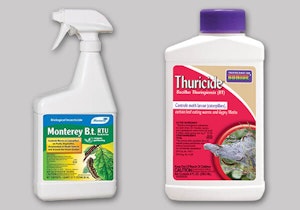 Monterey B.T. RTU spray - Controls worms and caterpillars on fruits, vegetables, ornamentals and shade trees in and around the home garden. OMRI Listed for organic gardening.
Monterey B.T. RTU spray - Controls worms and caterpillars on fruits, vegetables, ornamentals and shade trees in and around the home garden. OMRI Listed for organic gardening.
- Thuricide (BT) Concentrate by Bonide - Controls caterpillars, loopers, cabbageworms, hornworms, leaf folders and leaf rollers. Won't harm beneficial insects.
Both products have the same active ingredient to effectively address the concerns noted below. Speak with one of our Trusted Garden Advisors to learn more.
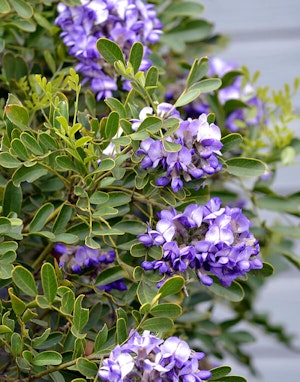
1. Insects on Texas Mountain Laurels
As Texas Butterfly Ranch notes, gardeners are likely seeing, “The Genista Broom moth caterpillar, Uresiphita reversalis. Sometimes called the Sophora worm, these moth larvae relish the toxic leaves of our native Texas Mountain Laurels, Sophora secundiflora.”
To see if your Texas Mountain Laurel is infested, look for loose webbing on new leaves or if your leaves have been eaten.
Unfortunately, as Hill Country Mysteries notes, “Birds don't eat genista caterpillars because of the alkaloids absorbed from the plants. The only natural enemies… have been fire ants and assassin bugs, but your tree may have a tough time with a combo of genista, summer heat and drought.
A positive, however, is that these pests are only pests rather than extremely harmful predators to your plant. As Texas A&M reports:
Plant health is generally unaffected by feeding unless large numbers of caterpillars cause heavy defoliation (leaf loss). In these cases, plant growth may be slowed, and aesthetic damage may be significant. Control is generally unwarranted, but in some situations, such as commercial plant production in nurseries or heavy infestations in high-value landscapes, pest control or suppression may be desired.

2. Insects on Bougainvilleas
Another insect bothering garden owners in The Valley of the Sun is the Bougainvillea Looper Caterpillar. The Bougainvillea bush grows very well in warm climates like ours and attracts these small caterpillars. As Gardening Know How explains:
Bougainvillea loopers are small worm-like caterpillars that are commonly called ‘inchworms.’ They will move by bunching up their body and then stretching back out, as though they are measuring the space. The bougainvillea looper caterpillar will be yellow, green or brown and found on bougainvilleas, but may also be found on plants from the same family as the bougainvillea, such as four o’clocks and amaranthus. These bougainvillea worms are the larva of the somber carpet moth. This moth is small, only about 1 inch wide, and has brown wings.
The tricky part about these worms is that you may not even know you have a problem until it’s too late; these bugs are very small and hard to see. Plus, they tend to eat your plant at night and sleep obscured in its leaves during the day.
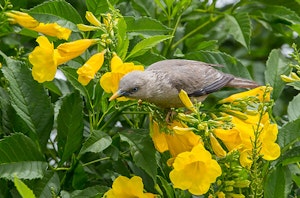
3. Insects on Tecoma stans
As if we don’t have enough problems with our Texas Mountain Laurels and Bougainvilleas, gardeners in the Phoenix area are also struggling with their Tecoma stans. According to Arizona State University, “During late summer of good monsoon years, a leaf skeletonizer caterpillar will ravage foliage on upper stems primarily. The damage to foliage is short lived and cosmetic, not lethal.”
All three of the above plants will benefit from the products recommended above—available at your local SummerWinds Nursery.
Understanding Helpful Garden Insects
After reading about worms and caterpillars that are wreaking havoc on Texan Mountain Laurels, Bougainvilleas and Tecoma stans, you may think any bug on your leaves is an enemy. But don’t kill everything you see! Here is a list of helpful insects you actually want to keep in your garden.
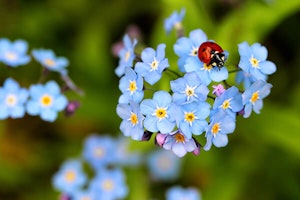
1. Ladybugs
Ladybugs can help you deter a variety of pests in your garden: aphids, whiteflies, mites, mealybugs and scale insects – those pests with sucking mouth parts that feed on your precious plants. It may not happen in an instant, but ladybugs can actually help your pest situation without using insecticides. To attract ladybugs to your garden, you need to plant dill, dandelions, fern-leaf yellow and Basket of Gold.
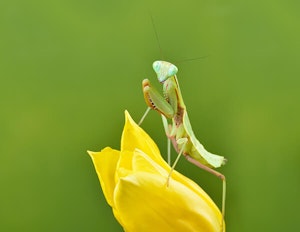
2. Praying Mantis
These intriguing creatures look fascinating and come with a healthy appetite that will benefit your garden. They can eat up many types of harmful insects such as flies, mosquitoes, moths and even roaches. They also feed day and night on insects. Praying Mantises can also help control the moth population in your garden, as many species of moths like to chew on the edges of your plant’s creating some hefty damage. To attract these to your garden, you will need to plant dill, yarrow and fennel.
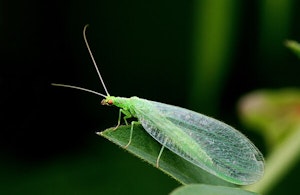 3. Green Lacewings
3. Green Lacewings
Just like the ladybug, lacewings are beneficial insects that will become your best friend in the garden. They have long antennae and gold or copper eyes. These insects will happily enjoy eating any mealybugs, psyllids, thrips, mites, whiteflies, aphids, caterpillars and leafhoppers on your plants’ behalf. Plant dill, angelica and coriander to attract green lacewings to your garden.
Note from SummerWinds: Be sure to discontinue the use of broad-spectrum pesticides to allow these little bugs the chance to do their job in your garden.
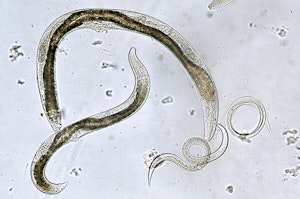
4. Nematodes
Nematodes are microscopic organisms that occur naturally in soil. Helpful nematodes can be used anywhere pests exist including backyards, flower and vegetable gardens, lawns, fruit and nut trees, vines, greenhouses, row crops, pastures and more.
They are used to control soil borne insect pests, but cannot control pests found in the leaf canopy. What nematodes will do is attack soil borne insect pests with no harmful effects on earthworms, plants, animals or humans, making it an environmentally friendly solution. What do these bugs kill? They go after caterpillars, cutworms, crown borers, grubs, corn rootworms, crane flies and thrips fungus gnats.
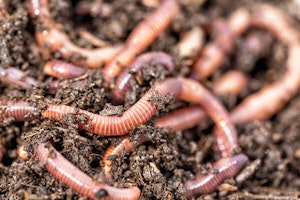
5. Redworms
These little worms are beneficial in improving your soil. Redworms, known as red wigglers, are basically earthworms. These worms ingest food scraps and other organic waste at a rapid pace. Castings (feces) from redworms actually contain more beneficial micro-organisms, enzymes, humus and plant stimulants than regular compost.
Protecting Indoor Plants from Insects
Pests on plants isn’t limited to just your outdoor garden; your indoor plants can be affected as well. What can you do? Here are some very helpful tips from Garden and their solutions to keep your indoor plants safe.
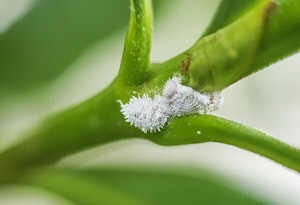
1. Mealy Bugs
These pests are soft-bodied insects that look like tufts of white cotton. They typically go unnoticed until they are full-grown bugs. This is because they only produce their white cotton-like covering when they are adults. Mealy bugs pierce the stems and leaves and ingest their nutrient dense sap. Plants who have these bugs in them are often sticky. You can control these bugs by picking them out with your hand or by dipping a cotton swap in rubbing alcohol and rubbing it over your plant’s leaves.
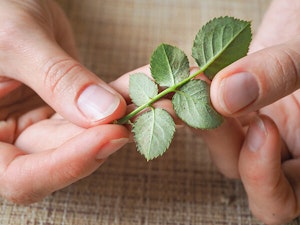
2. Spider Mites
Spider mites are a serious indoor plant pest because they can multiply rapidly, causing injury, defoliation and plant death. While difficult to see, they are oval shaped and yellowish or greenish in color. To verify you have this pest, Garden recommends placing a sheet of white paper under discolored leaves. Tap the leaves, and then watch for tiny moving creatures on the paper. To get rid of them, try washing your plant with insecticidal soil or plant oil extracts.

3. Fungus Gnats
These are often mistaken for fruit flies, but are seen flying around your house. As Garden notes, the legless, worm-like larvae live in damp soil and are scavengers with habits similar to springtails, causing little or no damage. How can you protect your houseplants? Water your plants thoroughly but let the soil dry as much as possible without letting them wilt.
4. Cyclamen Mites
Cyclamen mites are related to spiders and ticks; they inhabit protected portions of plants, especially young tender leaves, buds and flowers, but they are not as common as other pests previously described. These mites spread by leaf-to-leaf contact as well as by hands and clothing. Infested leaves are stunted, brittle and often hairy; flower buds may be deformed and streaked. Sometimes injured leaves, buds and flowers may turn black. Stems of infested ivy plants are often leafless or have small hairy leaves. Unfortunately, you’ll need to throw away your infested plant to get rid of the issue.
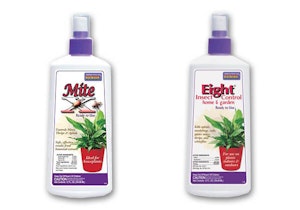 Indoor Houseplant Pest Products
Indoor Houseplant Pest Products
- Bonide's Mite-X® - This broad spectrum, effective indoor/outdoor mite control works on a wide range of plants. Made from botanical cottonseed, clove and garlic extracts. Also kills aphids and thrips.
- Bonide's Eight® Insect Control RTU - This is a ready-to-use no odor, non-staining, all purpose insecticide. Kills insect and disese pests on over 60 varieties of ornamentals and houseplants. Great for container gardens too.
Protecting Your Outdoor and Indoor Plants from Insects
It’s important to know the good-guys from the bad-guys when it comes to garden pests and insects. While some species can be harmful to your plants, others can provide wonderful benefits. Visit your local SummerWinds Nursery for even more information about which pests to encourage and which to deter. Our Trusted Garden Advisors can point you in the right direction when it comes to your gardening needs.

